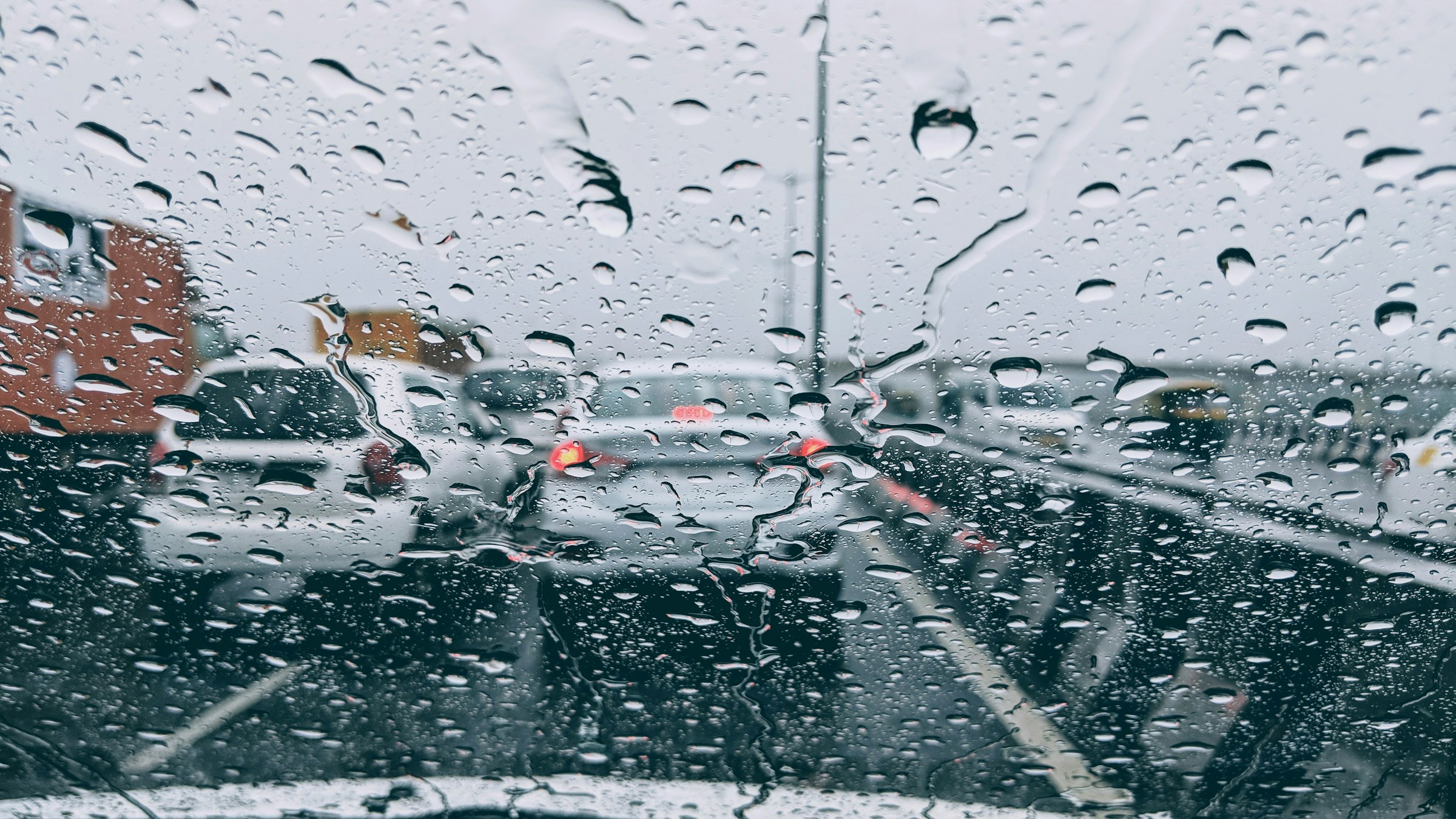Driving in rainy conditions can be quite challenging, not only for drivers but also for vehicles. Rain significantly impacts driving safety and comfort. Equipping your vehicle with the right set of tires is essential for better control, hydroplaning resistance, and smooth performance.
Tires play a crucial role in how well your vehicle performs on wet surfaces, affecting braking distance, steering responsiveness, cornering, and maneuvering. By understanding how rain affects driving and tire performance, and what are the key features to look for in tires, you can prioritize your safety and peace of mind during the drive.

How Rain Affects Driving and Tire Performance
Rainy days have a lot of impact on driving conditions and tire performance. Rain can significantly reduce the tire’s traction and increase the risk of hydroplaning. At the same time, worn tires or improper inflation also increase the risk of slipping in wet conditions, since they reduce the tire’s ability to channel water away from the contact patch.
Wet roads minimize the friction between the tires and the road surface, making it harder to accelerate, corner, maneuver, and brake. This means that tires need a longer time to stop in wet situations, as the braking distance is doubled. The tire’s steering responsiveness and driving stability become slower and less predictable, making it harder to maneuver.
On the other hand, hydroplaning is a condition where the tire loses contact with the driving surface due to a layer of water between them. It can cause the tire to lose traction, resulting in a loss of control during the performance. It usually occurs in heavy rain or when there’s standing water. Worn-out tires can’t channel water away from the footprint, since their grooves are less effective.
Key Features to Look for in Tires for Wet Weather
There are certain times of the year when rain is more frequent, and during those periods, it’s important to have top-quality tires to maintain control over your vehicle. When water accumulates between your tires and the road, it can create slippery conditions. Make sure to prioritize your safety during these times.
To ensure your safety on the road, these are the key features that you need to look for in tires for wet weather:
Tread Design and Wide Grooves
The tire’s tread design is the most important part of the tire. For wet conditions, the wide and deep grooves work best to move water away from the footprint and enable the tire to keep continuous road contact. The wide grooves that run around the entire tire are called circumferential grooves, and they’re in charge of preventing hydroplaning in wet weather.
Silica Compound
The rubber compound manages to keep the tire flexible in warm and cold temperatures and increases its grip in wet weather. This silica compound enables the tire to mold to the road surface, which ensures the vehicle’s better traction in different conditions, especially on rainy days.
Hydroplaning Resistance and Contact Patch
Hydroplaning resistance is the tire’s ability to resist losing control on the driving surface due to a layer of water. It depends on the tire’s tread design, tread depth, vehicle weight, and speed. The tire’s tread is designed with the ability to channel water away fast enough to keep proper surface contact. If the tire’s tread is in good condition, the grooves help move water away from the tread elements. But if the tire is worn, this ability can be diminished and lead to hydroplaning. Also, a narrower contact patch can increase control in wet conditions by upgrading road grip.
Local Climate and Choice of Vehicle
If you live in an area with a common and long rainy season, choosing the proper tire can have a huge impact on your driving safety and control. Purchasing the best all season, all weather, or summer tires can save you money and time. Furthermore, the best option for wet-weather conditions is all-wheel drive vehicles, which distribute power to all four wheels to ensure better traction and handling in changing conditions.
Types
Choosing the right tires for rainy days depends on a few factors, such as local climate, vehicle type, and weather conditions. Here are some of the best tire types that you can choose from for your rainy adventures.
All season tires – These tires are designed for year-round performance and can handle dry, wet, and light winter conditions. They typically feature optimized tread patterns and wide grooves that enhance traction in rainy weather.
All weather tires – Identified by the 3PMSF symbol, these tires provide good winter traction and are also suitable for warm weather and rainy conditions. They are made with wide grooves and an optimized rubber compound that ensures reliable performance throughout the year.
Summer tires – These tires deliver excellent grip during warmer months. Their tread patterns and rubber compounds are designed to maintain continuous road contact and disperse water from the footprint even in heavy rain.
Winter tires – Specifically designed for ice- and snow-covered roads, winter tires excel in these conditions. Their deeper grooves effectively evacuate water and slush from the tire’s footprint, ensuring secure performance even on rainy days.


Recommendations
Driving in the rain requires more careful driving. Some of our recommendations for rainy days are to reduce the speed significantly, since tires lose around one-third of their traction on wet pavement. Also, keep an optimum distance between your vehicle and the vehicle in front of you. It can give you enough time to react to sudden stops or changes in traffic.
Turn on headlights to improve your visibility and make sure to be more noticeable to others. Avoid sudden movements such as braking or cornering to prevent hydroplaning. These are our recommendations to keep you safe on the road.
Additionally, consider investing in top-quality tires specifically designed for wet conditions. We recommend the following tire models for excellent traction in the rain:
- Michelin CrossClimate2
- Continental ExtremeContact DWS06 Plus
- Goodyear Eagle F1 Asymmetric 6
Conclusion
Choosing the right tires for rainy conditions will keep you safe while driving. Before purchasing and mounting them, consider their tread design, rubber compound, contact patch, and type to make sure you have the correct tires.
Also, don’t forget to be more careful when driving in wet conditions. Slow down, keep the distance, and turn on your headlights to ensure the safety of yourself and others on the road. With these tips, you’ll be prepared for slick roads and sudden weather changes. Invest in your next tire and drive with peace of mind when it rains.
Article Last Updated: August 7, 2025.


